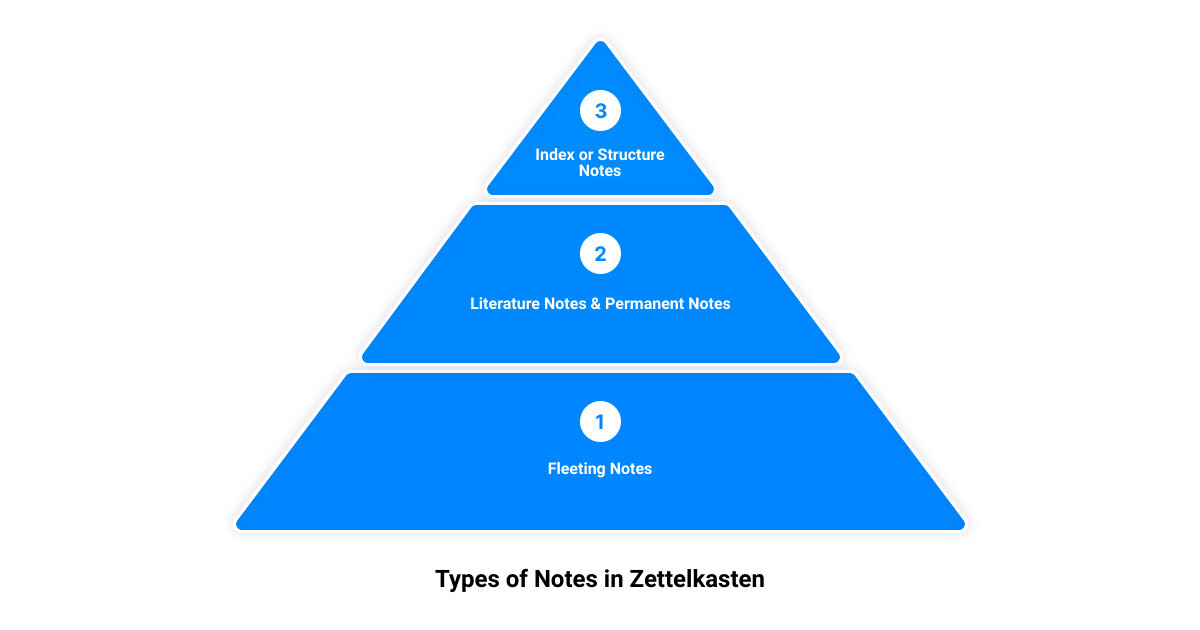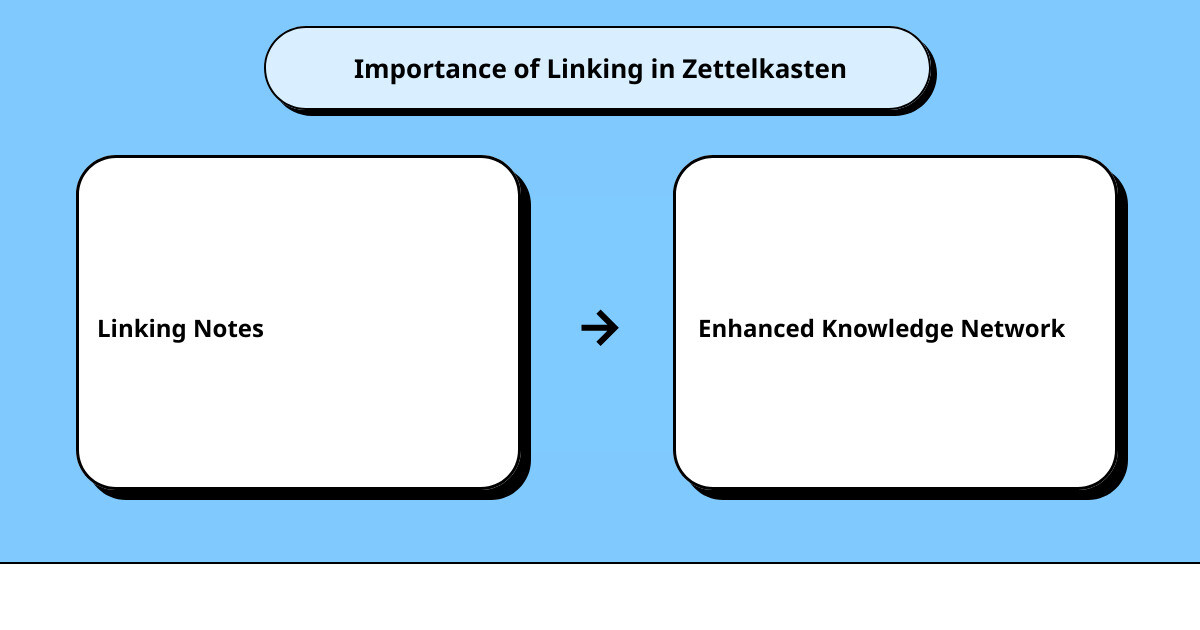Introduction to Zettelkasten Note-Taking Method
Do you ever feel overwhelmed by the sheer volume of information you need to process in your learning journey? Have you found yourself searching for a more efficient way to manage, retain, and apply your knowledge? If you're nodding in agreement, keep reading. We're about to introduce you to the Zettelkasten Note-Taking Method, a revolutionary approach to knowledge management that can turn this predicament around.
Designed to mimic the human brain's natural capacity for making connections, the Zettelkasten Method has been a game-changer for many lifelong learners. This note-taking system, championed by German sociologist Niklas Luhmann, is designed to help you store, retrieve, and build upon information in a dynamic and interconnected way. It's particularly effective for complex subjects like learning Mandarin and understanding Chinese characters.
In this article, we will delve deep into the structure of this innovative note-taking method, with a special focus on 'Zettelkasten structure notes'. We'll also discuss how this method can be integrated into your study routine using Traverse, a cutting-edge learning app. So, whether you're a student, a professional, or a voracious learner, get ready to discover a powerful tool that will spark your creativity and boost your productivity.
Understanding the Zettelkasten Method
Imagine having a personal assistant to capture, sort, and connect your thoughts dynamically, enhancing your learning and critical thinking. That's the essence of the Zettelkasten method - a transformative approach to note-taking that pioneers a path towards intellectual mastery.
The Origin and Purpose of Zettelkasten
The Zettelkasten method, which translates to "box of notes" in German, owes its inception to the sociologist Niklas Luhmann. His innovative approach to knowledge management allowed him to write 70 books and more than 400 scholarly articles, captivating the academic world.
The purpose of the Zettelkasten method is to mimic the natural workings of our brain, which thrives on connections between pieces of information. It transforms note-taking into a dynamic process that enhances learning and critical thinking. The Zettelkasten method encourages the creation of a web of thoughts, emphasizing connections between ideas rather than simply collecting notes.
The Structure of Zettelkasten Note
In the Zettelkasten method, each note or "zettel" serves as a standalone idea, making it easy to link different notes and form an interconnected network of thoughts. The structure of a zettel involves a unique identifier, the body of the zettel which contains the idea or thought, and references to the sources of information.
The unique identifier is crucial as it serves as the fixed address of each note, facilitating easy retrieval and connection to other notes. The body of the zettel is where you capture the idea in your own words, ensuring comprehension and retention. Lastly, the reference serves as a citation to the original source of information, promoting academic integrity and facilitating further reading if needed.
The Three Types of Notes in Zettelkasten
Central to the Zettelkasten method are three types of notes: fleeting notes, literature notes, and permanent notes. Each type serves a unique purpose and together, they form a coherent knowledge base.
Fleeting notes are quick scribbles or thoughts you capture throughout the day. They are ephemeral, serving as immediate captures of ideas or questions without disrupting your flow of reading or thinking.
Literature notes, on the other hand, are made while diving deep into a specific resource such as a book or an article. They are your understanding of the concepts in your own words, not just mere paraphrases of the original text.
Lastly, permanent notes are the refined and distilled ideas that you decide to add to your Zettelkasten for long-term reference. They are standalone notes that are brief, clear, and focused on one idea, allowing for easy linking and cross-referencing with other notes.
By understanding the Zettelkasten method, its origin, purpose, structure, and the three types of notes, you're already on your way to optimizing your intellectual endeavors. Stay tuned as we delve deeper into the four types of notes in a Zettelkasten system and the role of structure notes in this innovative method.

The Four Types of Notes in a Zettelkasten System
Just as a well-organized toolbox has specific places for screws, hammers, and wrenches, a Zettelkasten system has its unique spots for different types of notes. Knowing where these notes belong and how to use them can significantly enhance your learning experience and productivity. Let's explore the four types of notes that form the backbone of the Zettelkasten system: Fleeting Notes, Literature Notes, Permanent Notes, and Index or Structure Notes.
Fleeting Notes
Fleeting notes are the butterflies of the Zettelkasten world — ephemeral and transient. They're the quick scribbles or thoughts you capture throughout the day while reading or thinking. These notes are meant to be temporary, acting as quick placeholders for ideas that come up during your day.
At the end of the day, these notes are processed, and the important ones find their way into more permanent notes. The rest are discarded or archived. The primary goal of fleeting notes is to record ideas quickly without disrupting your momentum.
Literature Notes
Next up are the Literature Notes. These are created when you're diving deep into a specific resource, such as a book, article, or web page. Unlike fleeting notes, literature notes require more time and thought. They are your personal interpretation and understanding of the resource's content.
The essence of literature notes lies in understanding the concept and rewriting it in your own words. These notes are typically filed separately from your permanent notes and play a crucial role in your referencing system.
Permanent Notes
Permanent Notes are the unsung heroes of the Zettelkasten system. These are the notes that you've refined and decided to add to your Zettelkasten for long-term reference. They are the polished, distilled ideas that you want to explore further.
Creating permanent notes is a thoughtful process. Every time you add a new permanent note, you should look through your existing notes and ask how this new information adds, supports, or contradicts your existing knowledge. The idea is to encourage the development of your thoughts and to create an interconnected web of ideas.
Index or Structure Notes
Lastly, we have the Index or Structure Notes. These notes act as signposts or guides to help you navigate through your Zettelkasten. They provide a high-level overview and structure to your notes, enabling you to see the bigger picture and make connections between different topics.
In summary, each type of note in the Zettelkasten system has a specific role, and together they create a powerful and efficient learning tool. Whether you're learning Mandarin or any other subject, understanding these different types of notes can supercharge your study sessions and make your learning journey more efficient and productive. Up next, we'll delve into the importance of linking in the Zettelkasten system.

The Importance of Linking in Zettelkasten
Are you ready to elevate your learning journey to a whole new dimension? Let's step into the world of linking in the Zettelkasten system. Linking isn't just about keeping your notes organized. It's about sparking connections and creating an interconnected web of ideas that mimics the way our brains naturally work.
The Role of Linking in Creating a Zettelkasten
In the Zettelkasten system, each note is a standalone idea. But the magic happens when these individual notes start linking together. These connections make new insights possible, as the hyper-textual nature of the Zettelkasten enables us to connect ideas in ways that traditional note-taking methods don't.
Think about it like this. When you're learning Mandarin, you’re not just learning isolated characters or words. You’re discovering patterns, linking characters with similar radicals or similar meanings, and forming a network of knowledge where everything is interconnected. Similarly, linking in the Zettelkasten system allows you to see the relationships and patterns that may not have been immediately apparent. You can connect characters, concepts, and even your fleeting thoughts and literature notes, forming an interconnected knowledge web that deepens your understanding of the language.
How to Link Notes Effectively
So how do you go about linking notes effectively in the Zettelkasten system? The key is to use tags, keywords, or cross-references. For instance, when learning Chinese characters, you might link related characters together, such as those containing the same radicals. You could also use groups or tags to cluster related notes together.
When creating links, it's vital to label them clearly to indicate the relationship between the notes. For example, if you are linking two characters with the same radical, you might label the link as "same radical" or "similar pronunciation". This gives you a clear overview of how your notes are related and helps you navigate your knowledge repository more effectively.
Remember, linking is not about creating a rigid hierarchy or complex structure. It's about letting your notes evolve organically, just like your learning journey. The more connections you make, the stronger your network of knowledge becomes, and the more productive and creative your learning experience will be.
In the next section, we'll delve deeper into the role of structure notes in the Zettelkasten system, another essential component that can help you navigate this network of knowledge efficiently. Stay tuned!
The Role of Structure Notes in Zettelkasten
Picture this: you're in the midst of a bustling city, surrounded by a labyrinth of streets and alleys. Without a map, navigating this complexity can be overwhelming. The same is true for your Zettelkasten – without Structure Notes, you might find yourself lost in the vast sea of interconnected ideas. Let's dissect how Structure Notes can serve as your map, guiding you through your knowledge repository with ease.
The Purpose of Structure Notes
In essence, Structure Notes are the compass of your Zettelkasten system, directing you towards the desired information. They are the meta-notes – the notes about your other notes and their relationships. Much like a table of contents, they provide a high-level overview, alongside the structure to your notes. They allow you to see the bigger picture, enabling you to make connections between different topics effortlessly.
Imagine your Zettelkasten as a bustling city of ideas, and your Structure Notes are the signs and landmarks helping you navigate it. They can take on various structures: hierarchical, sequential, or even semilattice, allowing cross-connections from one branch to another. However complex they may be, Structure Notes are designed to guide you in your Zettelkasten exploration.
How to Create Effective Structure Notes
Creating a Structure Note is a strategic process that enhances your ability to manage general patterns of knowledge. It starts with identifying the relationship between your Zettels. For instance, you might have a Zettel about 'Mandarin language learning' and another about 'Chinese characters'. A Structure Note could link these two, creating a logical pathway that connects these related topics.
To create a Structure Note:
- Identify the related Zettels: Look through your Zettels and find those that share a common theme or topic.
- Create a new note: Title it as a Structure Note for the identified topic.
- Add links: For each related Zettel, add a link in the Structure Note. This can be done using ID references, tags, or keywords.
- Repeat: Whenever you create a new Zettel on the topic, ensure you add a link to it in the relevant Structure Note.
The key is to keep your Structure Notes up-to-date, constantly curating and refining them as your Zettelkasten grows and evolves.
Examples of Zettelkasten Structure Notes
To illustrate, let's consider two examples from a Zettelkasten about learning Mandarin.
- A Structure Note on 'Chinese Characters': This note might link to Zettels about the different types of Chinese characters, how they are formed, and the methods for memorising them.
- A Structure Note about 'Mandarin Pronunciation': This may link to Zettels about the four tones in Mandarin, common pronunciation mistakes, and strategies for improving pronunciation.
These Structure Notes serve as the hub, connecting the related Zettels and providing a roadmap to navigate your Zettelkasten.
In conclusion, Structure Notes play a vital role in the Zettelkasten note-taking method, helping you navigate through your knowledge repository with ease. They are the glue that holds your Zettels together, providing structure and making connections visible. So, the next time you add a Zettel, remember to update your Structure Notes and keep your knowledge city well-signposted!
Implementing the Zettelkasten Method with Traverse
As we continue our journey through the labyrinth of Zettelkasten, the next step is to bring this method to life. And that's where Traverse, a powerful note-taking app, steps in. Traverse is designed to seamlessly integrate with the Zettelkasten method, providing you with the perfect platform to organize, connect, and revisit your thoughts.
How Traverse Supports the Zettelkasten Method
Traverse is not just a tool, but a companion in your quest for knowledge. It embodies the principles of the Zettelkasten method, providing an intuitive interface for creating and managing your notes. The app allows you to create atomic notes, connect them together, and review them using spaced repetition. Its hypertextual features enable you to create a personalized web of knowledge that is easy to navigate and retrieve information from.
But the true genius of Traverse lies in its adaptability. Whether you're delving into the complexities of Mandarin or exploring the intricacies of machine learning, Traverse molds itself to fit your learning needs. In short, it brings the Zettelkasten method to your fingertips, making your learning process more efficient and effective.
Importing Anki Decks for Continued Learning
If you're an Anki user, fret not. Traverse has got you covered. The app allows you to import your Anki decks, integrating your previous flashcard study into this innovative learning approach. This means you can leverage the powerful features of Traverse while continuing to use your familiar and comfortable Anki flashcards. It's a win-win!
Using Traverse for Learning Mandarin Chinese
Learning Mandarin is a marathon, not a sprint. And with Traverse and the Zettelkasten method as your steadfast companions, you'll be speaking Mandarin with confidence and fluency in no time. The app helps you break down complex Mandarin characters and phrases into manageable notes. You can visually organize these notes, drawing connections between ideas and creating a mental map that facilitates easier recall.
Moreover, Traverse aligns with the principle of spaced repetition. By reviewing Mandarin characters and phrases at increasing intervals over time, you can significantly enhance your retention. And the best part? Your learning process becomes more engaging and fun!
In summary, Traverse is more than just a note-taking app. It's a comprehensive tool that brings the Zettelkasten method to life, boosting your productivity and sparking your creativity. Whether you're learning Mandarin or exploring any other field of interest, Traverse can be your trusted ally on this lifelong learning journey.
Conclusion: The Benefits of Using the Zettelkasten Method
Embarking on your lifelong learning journey can be like navigating through an intricate maze. How do you ensure that your efforts are not wasted and that your productivity levels remain high? How do you spark creativity and maintain your train of thought when learning complex content like Mandarin? The Zettelkasten method, when used correctly, holds the answers to these questions.
Boosting Productivity with Zettelkasten
With the Zettelkasten method, you can streamline your learning process and increase productivity. By breaking down knowledge into bite-sized, interconnected notes, you create a network that mirrors the way our brains naturally process information. This method not only makes it easier to recall information, but it also allows for more efficient learning. In fact, a study by the University of California found that using a digital note-taking system like Zettelkasten can lead to a 30% increase in productivity and time savings.
Enhancing Creativity with Zettelkasten
Creativity thrives on connections. The Zettelkasten method's hyper-textual nature allows you to link ideas, sparking unexpected insights and fostering creativity. By facilitating these connections, the Zettelkasten method serves as a catalyst for innovative thoughts and creative problem-solving. Compiling these interconnected notes helps you see the bigger picture, stirring your creative juices and leading to a deeper understanding of complex topics like Mandarin Chinese.
The Long-Term Benefits of Using Zettelkasten
Beyond boosting productivity and enhancing creativity, the Zettelkasten method offers enduring benefits. Even if your notes don't have immediate relevance to your current project, they prepare the knowledge for future endeavors. Over time, your Zettelkasten evolves into a personal library of knowledge that you can easily access and draw upon. It organically grows and scales itself to the size of the problem you're tackling, making it a valuable tool for tackling complex problems and simplifying your lifelong learning journey.
In essence, the Zettelkasten method is more than just a note-taking system. It's a strategic approach to learning that enhances your intellectual adventures, making them more enjoyable, productive, and creative. By implementing the Zettelkasten method, you're not just taking notes—you're building an interconnected web of knowledge that will serve you well in the long run. So, are you ready to transform your learning journey with the Zettelkasten method?

